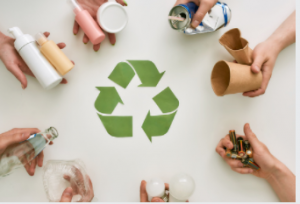Tips For Bottle Recycling
Most of us have seen advertisements for bottle recycling, but how do we do it? Plastic bottles are collected, sorted, sold, shipped, and melted down to make new bottles. They are recycled by scavengers, reducing litter and carbon emissions. Here are some tips for recycling your plastic bottles. First, empty your bottles. It will make the process go much more smoothly. Once your bottles are empty, run them through a washing machine to remove dirt and labels.
Plastic bottles are sold, shipped, melted, resold, and shipped again.
 Many plastic bottles end up at a dump. Traders there buy PET soda bottles, which stand for polyethylene terephthalate. The plastic can be sold for less than five cents per kilogram, a fraction of cardboard boxes or metal cans. But collecting these recyclables is difficult. The sorting and packing of them into large bags takes several hours and sometimes days. In addition, the children often do the cleaning themselves when they should be attending school.
Many plastic bottles end up at a dump. Traders there buy PET soda bottles, which stand for polyethylene terephthalate. The plastic can be sold for less than five cents per kilogram, a fraction of cardboard boxes or metal cans. But collecting these recyclables is difficult. The sorting and packing of them into large bags takes several hours and sometimes days. In addition, the children often do the cleaning themselves when they should be attending school.
Coca-Cola recently announced that it would continue using plastic bottles despite widespread outrage. Its head of sustainability, Bea Perez, defended the practice, saying that a switch to reusable bottles would alienate customers, reduce sales, and increase its carbon footprint. However, the company did not comment on its plans to phase out plastic bottles in Africa.
They are recycled by “scavengers.”
The bottle recycling SA program encourages consumers to return bottles and cans and collects thousands of bottles and cans through blue boxes.
Scavengers pick up used bottles and cans from the garbage and then recycle them. This process is effective, and the government decided to make recycling worthwhile by offering a small deposit for each recycled container. The deposit is weighed at recycling facilities and converted into cash. As more people recycle, the value of the bottles and cans increases.
They reduce litter
To help the environment, recycle bottles and other packaging materials. You can find bottle recycling centres in most towns and cities. In addition, the beverage industry has an active campaign to make litterless noticeable. Many companies donate money to recycling centres and organise litter cleanups. Some companies have even made videos featuring models dancing through a recycling facility. Learn more about bottle recycling SA.
The 1970s saw several key national environmental developments, including Earth Day and the Endangered Species Act. These laws spurred individual states to act. As a result, between 1980 and 2001, six states passed legislation to charge bottles. These laws, commonly known as “bottle bills,” were originally intended to promote the reuse of glass bottles. More than a dozen states have since adopted them. Ultimately, however, most bottle deposit bills are unenforceable and are a wasteful way to discourage recycling.
They reduce carbon emissions.
One of the best ways to help protect our environment is to recycle bottle contents. By doing so, you reduce the amount of waste in landfills. Recycling reduces the amount of waste that we throw away; it also helps us protect our environment from climate change. The biggest greenhouse gas is methane, produced when organic materials break down landfills. By bottle recycling SA your beverage bottles, you prevent the decomposition of organic materials and reduce methane generation. This greenhouse gas is responsible for more than 23 per cent of the carbon dioxide emissions that the world emits.
Compared to traditional materials, glass bottles are less likely to contribute to the carbon emissions that the world produces. According to the University of British Columbia study, recycled glass bottles release less than one gram of carbon per litre. However, the difference is not that significant. Regardless of the method used, recycling glass bottles and PET bottles reduces carbon emissions. While glass and PET bottles produce almost the same carbon emissions, PET is more efficient.
They save space
Recycling bottle caps and spouts can help you save space and money simultaneously. Glass bottles made of recycled materials can save up to 50% of the energy required in their manufacture. Similarly, the production of new glass bottles requires less energy than making new ones. By recycling glass containers, you will be reducing the amount of mining waste that ends up in landfills. And it also saves the environment – recycling one ton of glass bottles will prevent the production of more than 3,000 tons of new glass each year.
